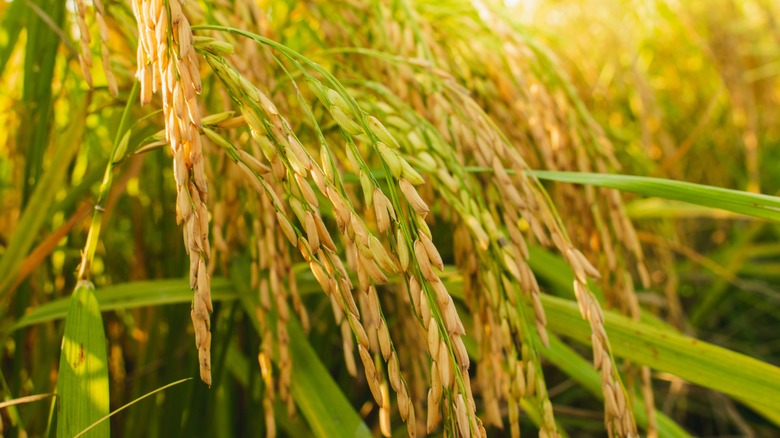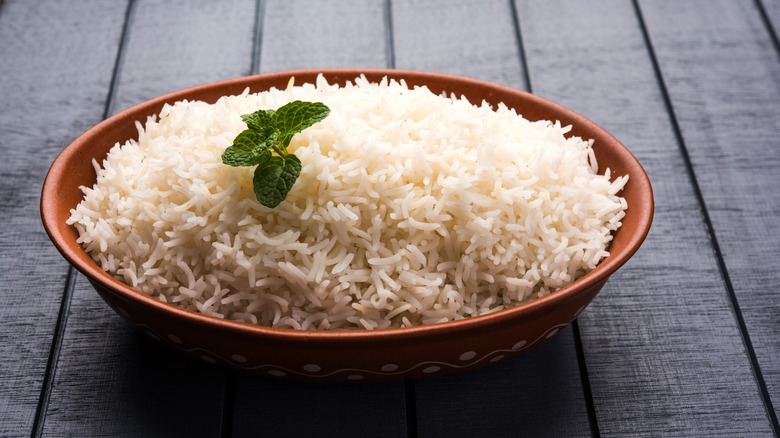This Is The World's Most Popular Variety Of Rice
When you talk about a staple crop for most people in the world, you are not describing wheat or potatoes, you're talking about rice. The World Economic Forum states that more than half the world's population depends on rice as part of their diet. It also states that rice is the second most-grown crop in the world, behind sugarcane and corn. Both production and consumption of rice are heavily concentrated in Asia, accounting for more than 80% of both categories, with Brazil being the only non-Asian country to crack the top 10, according to World Atlas.
Within that massive production, there are quite a few types of rice out there that you are probably familiar with. On your local shelves alone, you are likely to find brown rice, sushi rice, jasmine, and basmati among a dozen others. That is only a fraction of the total types of rice available. Bon Appétit reveals there are over 40,000 types of rice in the world. While that diversity may seem like a lot to you, what may be even crazier is that all those different kinds of rice originate from just two varieties, and one of those dominates the world market.
Indica rice dominates world production
The two types of rice that make up most commercial varieties are japonica and indica, according to Serious Eats. Both varieties are descendants of the rice first domesticated in Asia, with China eventually giving rise to japonica rice and indica coming out of the Indian subcontinent (via ThoughtCo.). Of the two, indica is the far more popular variety, with the U.S. Department of Agriculture estimating it makes up over 70% of the world's crop. Indica requires a wetter, warmer climate than its counterpart, so production is dominated by subtropical regions in South Asia like Vietnam and Thailand.
The more popular indica rice tends to be longer grain, thinner, and less starchy when cooked. Basmati and jasmine are the two most well-known strains of indica, and true to their origins, they are major staples in Indian cooking and other South Asian cuisines. Japonica is most often short or medium-grained and develops a more sticky texture. When you think of sushi rice or arborio, the type of rice that forms the basis for risotto. The fact that all these amazing rice styles came from just indica and japonica is a testament to how essential of a staple it is all over the world. After all, necessity breeds invention. Thankfully, this is one essential invention that turned out to be delicious.

